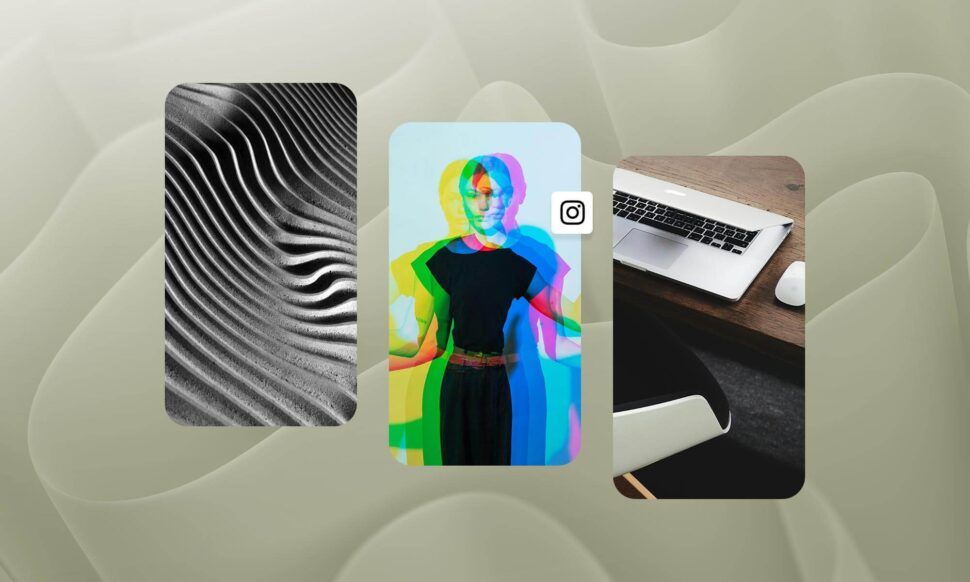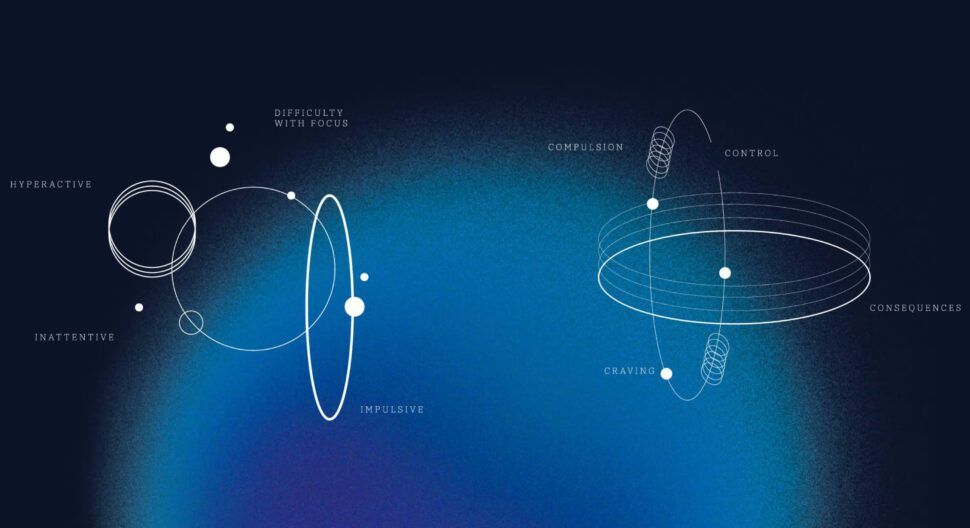October 24, 2024
Tools for Crafting a Brand Story That Connects
- Visual Soldiers
- Branding
- minute read

Crafting a brand story that truly resonates with your audience can feel like trying to catch lightning in a bottle. But when you get it right, it can spark a powerful connection with customers and build loyalty that stands the test of time. In today’s crowded marketplace, having a compelling brand story isn’t just a nice-to-have—it’s essential. It’s your chance to communicate what your brand stands for, what makes it unique, and why people should care. Think about companies like Apple and Nike; their brand stories aren’t just about products—they’re about a vision, a lifestyle, and a shared connection with their audience.
In this article, we’ll dive into the essential tools you need for crafting your brand story, and we’ll walk you through the steps to use these tools effectively. Whether you’re a marketing pro, a business owner, or someone looking for marketing services, you’ll find plenty of tips and tricks to help you create a brand story that connects and engages. Remember, we’re all in this together—Visual Soldiers included—aiming to share knowledge and expertise to help make your marketing journey a bit smoother. So, let’s get started!
Understanding the Importance of a Brand Story
What is a Brand Story?
Think of a brand story as the narrative that ties your company’s mission, values, and personality into a cohesive message. It’s not just about the ‘what’ and ‘how’ of your business; it’s deeply rooted in the ‘why.’ Imagine you’re sitting by a campfire. The way you connect with stories shared around that fire is how you want your customers to feel about your brand. A compelling brand story evokes emotions, builds a connection, and makes your brand memorable. It’s the heart and soul of who you are as a company.
How a Compelling Brand Story Can Enhance Customer Connection and Loyalty
People naturally crave connection. When customers connect emotionally with your brand, they’re more likely to stick around. That’s where your brand story comes into play. It adds depth and personality to what could otherwise be just another business. When your brand story resonates with your audience, it can turn casual customers into loyal fans.
For example, when you share your struggles and successes, you’re being real with your audience. This authenticity builds trust and rapport. Once you’ve hooked them emotionally, they’re more likely to advocate for your brand, share your story, and become repeat customers. They’re not just buying a product; they’re buying into a narrative that feels personal to them.
Real-World Examples of Successful Brand Stories
First up, Apple. Apple’s brand story isn’t just about selling tech products; it’s about innovation and thinking differently. From its inception, Apple framed itself as the underdog fighting against the ‘Big Brother’ of established tech giants. This daring narrative resonated with a broad audience, painting the brand as revolutionary, inventive, and user-centric. Their infamous “1984” Super Bowl ad didn’t just introduce a product; it unveiled a philosophy—a story that’s consistently echoed in their subsequent marketing efforts.
Next, you’ve got Nike. Nike’s brand story is all about inspiration and empowerment. Their “Just Do It” campaign wasn’t just a slogan; it became a mantra. Nike’s narrative celebrates athletes of all levels, and it’s packed with stories of perseverance, triumph, and pushing boundaries. From their visually gripping ads to their heartfelt storytelling in social media campaigns, Nike consistently draws on universal human experiences to foster a deep, emotional bond with their audience.
Finally, consider TOMS Shoes. This brand took a simple idea—buy a pair of shoes, give a pair to someone in need—and turned it into a global movement. The story of TOMS isn’t just about shoes; it’s about making a difference in the world. This altruistic brand story attracted a tribe of socially conscious consumers who wanted their purchases to contribute to a greater good. TOMS transformed a simple transaction into an opportunity for customers to feel like participants in a meaningful cause.
That’s the magic of a well-crafted brand story—it’s a timeless strategy that can turn first-time buyers into lifelong advocates. So, whether you’re a marketing professional looking to fine-tune your strategy or a business owner wanting to deepen customer relationships, investing in your brand narrative can pay off in big ways.
Ready to craft your own brand story? Let's make some magic
Book a CallEssential Tools for Crafting Your Brand Story
Crafting a brand story that resonates isn’t just about weaving together words and images; it’s about using the right tools to bring your vision to life and ensuring it reaches the right audience. Here’s a breakdown of some essential tools you need to get your brand story right. Spoiler alert: They’re simpler to use than you think!
Content Creation Tools
First things first, you need to create your content. Whether it’s blog posts, videos, or eye-catching graphics, having the right tools makes a world of difference.
- Blogging Platforms: Platforms like WordPress and Medium offer incredible ease of use, along with powerful customization options. They let you tell your story exactly how you want it.
- Video Editing Software: Want to add a bit more flair? Tools like Adobe Premiere Pro or even iMovie can help you create professional-looking videos that engage and convert.
- Graphic Design Apps: If visuals are your thing, easy tools like Canva are great starters. It’s user-friendly and offers a plethora of templates to make your graphics look good. For more advanced designs, look to Adobe and Figma lead the way. As you get deeper into your company, that’s when you want to start leveraging the expertise of a branding agency, like Visual Soldiers.
These tools make content creation seamless, allowing you to focus on what really matters: your story.
Research and Analytics Tools
Creating content without understanding your audience is like shooting in the dark. Research and analytics tools can shed some light.
- Audience Insights: Tools like Google Analytics and Facebook Audience Insights help you understand who your audience is, what they like, and how they interact with your content. This information is critical for tailoring your brand story to meet their needs.
- Competitor Analysis: Ever wondered how your competitors are nailing it? Tools like SEMrush and Ahrefs allow you to spy on what’s working for them and how you can do it better.
- Keyword Research: Because SEO isn’t dead. Tools like Google Keyword Planner and Ubersuggest help you find the terms your target audience is searching for, making your content discoverable.
By leveraging these tools, you can make data-driven decisions that keep your brand story relevant and impactful.
Social Media and Storytelling Platforms
Once you’ve got your content and you know your audience, it’s time to get that story out there. Social media and storytelling platforms are where the magic happens.
- Instagram: With its visual-first approach, Instagram is fantastic for brands looking to tell a compelling story through images and short videos. Use stories, reels, and posts to build a consistent narrative.
- Facebook: Facebook is versatile, supporting videos, blogs, and infographics. With its detailed advertising options, you can target your ideal audience with pinpoint accuracy.
- LinkedIn: For B2B or more professional brands, LinkedIn offers an opportunity to share in-depth articles, updates, and network with industry thought leaders.
- Podcasts: Sometimes, your audience just wants to listen. Starting a podcast on platforms like Spotify or Apple Podcasts can give your brand a voice, quite literally.
These platforms are invaluable for distributing your brand story, building community, and engaging your audience in real-time.
Using these tools in harmony allows you to craft a brand story that’s not only authentic but also deeply connected with your audience. And if you ever feel stuck or need some expert help, companies like Visual Soldiers offer expert creative services to bring your vision to life. Whether it’s design, marketing strategy, or branding, sometimes a little professional touch can make all the difference.
Steps to Effectively Utilize Tools in Crafting Your Brand Story
Identifying Your Brand's Unique Value Proposition and Core Message
So, let’s kick things off with figuring out what’s unique about your brand. This is the foundation of your brand story, the why behind your business. Your unique value proposition (UVP) is what makes you stand out from the crowd. It’s that special something that you offer, which nobody else does quite the same way. You’ve gotta dig deep and ask yourself, what problem are you solving for your customers? And how are you solving it in a way that’s different or better than others?
Hop onto tools like Google Keyword Planner or SEMrush to see what people are searching for in your niche. You can also use feedback from your customers and insights from social media analytics to get a clearer picture. Once you’ve got a solid UVP, it’s easier to develop a core message that resonates with your audience. Your core message should be concise yet powerful, capturing the essence of your brand in a sentence or two.
Mapping Out the Customer Journey and Touchpoints
Next up, you’ll want to map out your customer’s journey. No, we’re not talking about a literal map, but rather the steps your customers go through from the moment they first learn about your brand to when they become raving fans. This journey includes every touchpoint, from your website and social media profiles to customer service interactions and email newsletters.
Tools like HubSpot or Adobe Experience Manager can help you visualize and manage this journey. By identifying these touchpoints, you can ensure your brand story is consistent and engaging at each stage. This not only makes your story more cohesive but also makes your customers feel more connected to your brand.
Consider making a flowchart that outlines each stage of the customer journey. Pinpoint where your brand story can be most effectively communicated. Maybe it’s an emotional video on your website, informative blog posts that build trust, or social media updates that show the human side of your business. The key is to be present and compelling at every touchpoint.
Integrating Visual and Emotional Storytelling Techniques
Alright, let’s get creative! Visual and emotional elements are crucial in crafting a compelling brand story. They make your story come alive and resonate on an emotional level. People remember stories over facts, and visuals make stories even more memorable.
You can use graphic design apps like Canva or Adobe Spark to create stunning visuals that capture the essence of your brand. Pair these with emotionally-driven content to form a powerful storytelling duo. For example, if you’re a health and wellness brand, share before-and-after photos, testimonials, and inspirational stories from your customers. Use your video editing software to create compelling videos that showcase your brand’s journey, values, and mission.
Remember, authenticity is key. Don’t be afraid to show the behind-the-scenes action, the struggles, and the triumphs. This kind of transparency builds trust and loyalty. Experts in creative services, like Visual Soldiers, can aid you in blending these visual and emotional storytelling techniques effectively, giving your brand the impactful story it deserves.
Measuring Impact and Refining Your Story Based on Feedback and Analytics
Finally, it’s time to measure the impact of your brand story and refine it based on feedback and analytics. This step is often overlooked, but it’s crucial. After all, you wanna make sure your story is hitting home with your audience, right?
Use analytics tools like Google Analytics, social media insights, and feedback from surveys or reviews to gauge how your story is performing. Are people engaging with your content? Are they sharing it? What feedback are you getting? All of this info is gold. With this data in hand, you can refine and tweak your story to better resonate with your audience. Maybe you need to highlight different aspects of your unique value proposition, tweak your visuals, or adjust your core message based on what’s working and what’s not.
In the end, your brand story isn’t static—it’s a living, breathing entity that evolves with your brand and your audience. Stay flexible, stay curious, and keep fine-tuning your story to make it the best it can be.
Conclusion
Crafting a brand story might seem like a daunting task, but like any great story, it’s all about the journey. With the right tools and a clear plan, it can be a rewarding process that sets your brand apart. Understanding the importance of a brand story is the first step. It’s not just about what you sell, but why you sell it and the impact you wish to make. Take a leaf out of the books of iconic brands like Apple and Nike—they’ve mastered the art of connecting deeply with their audience through compelling narratives.
Next, make sure you have essential tools in your arsenal to bring your story to life. Content creation tools, like blogging platforms, video editing software, and graphic design apps, are critical for producing engaging materials. Research and analytics tools will give you insight into your audience, competitors, and trending topics, while social media and storytelling platforms help you share your story far and wide.
Remember, the goal is to create an authentic connection with your audience—one that goes beyond just transactions. When your brand story aligns with your audience’s values and desires, it builds loyalty and makes your brand memorable. So, don’t shy away from experimenting with different tools and techniques, and keep honing your craft. And if you ever need expert advice, Visual Soldiers is always here to help with creative services that bring your brand stories to life. Happy storytelling!










